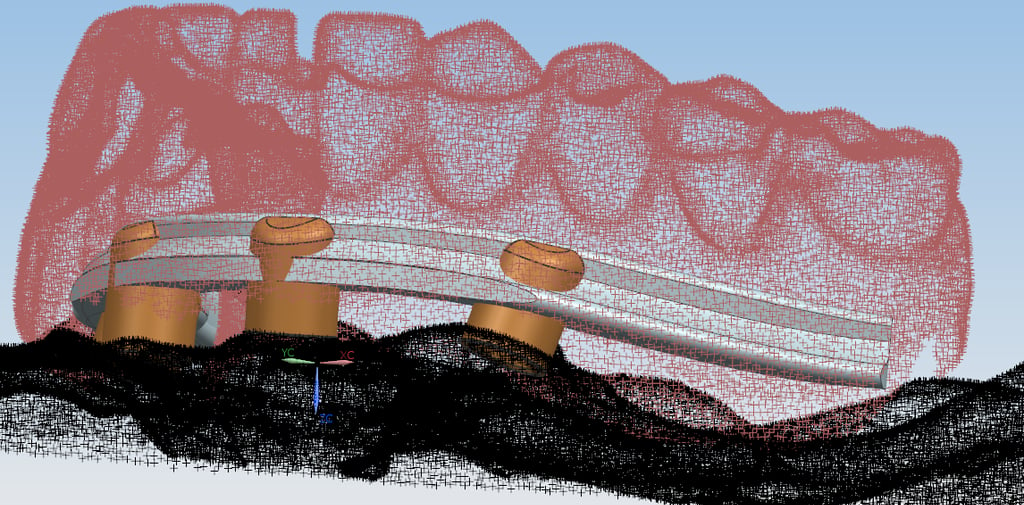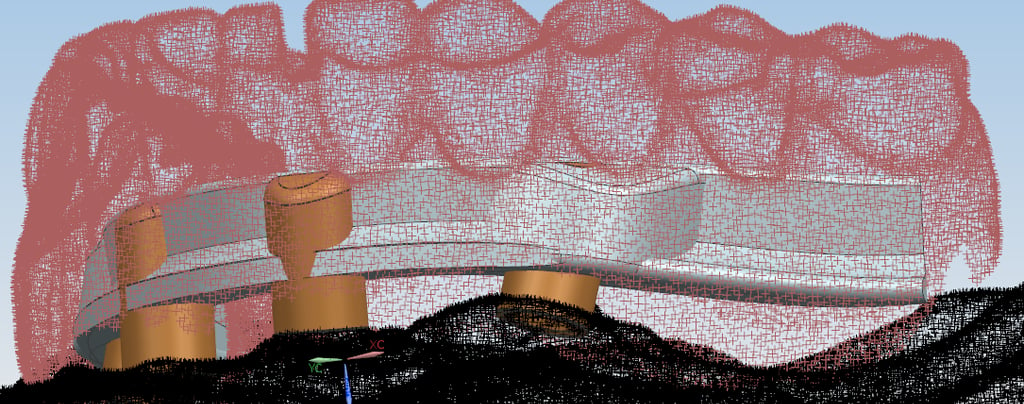Distal Extensions, Preventing Potential Failures
The distal extension of a full mouth restoration is the most likely area for a potential fracture. Let's review some critical aspects for success!
REFERRING DOCTOR BLOG


For full mouth fixed restorations, the distal extension is the most likely area for a potential fracture. Implant placement and position are critical, but restorative space can play a critical role for a successful case
There are times due to bone loss, implants can't be placed in an ideal position to support a more conventional distal extension (1-2 teeth). If the restorative space allows, the design and material thickness of the restoration can be increased in the direction of the occlusal forces and allow for a restoration that can resist the increased occlusal loads.
Above, we see a problematic design. Due to the length of the distal extension and the reduced height of the framework, we can expect over time this case will fail and fracture at the screw access hole of the most distal implant.
Here is a much more ideal design for the same case, which accommodates the length of the distal extension. With the added material thickness, especially at the most distal implant or fulcrum of the cantilever, this case has a much lower likelihood of a potential fracture.
Having this insight in mind during the treatment planning process (implant placement and restorative space) ensures we avoid potential failures, and we achieve a high success rate for you and your patients.
We hope this information is helpful in your Treatment Planning. If you have any questions or would like to discuss a specific case, please don't hesitate to reach out to us.


